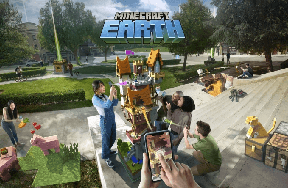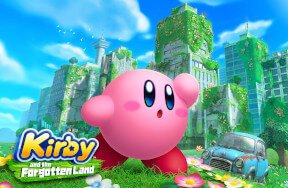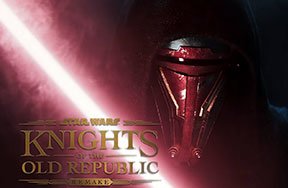What Makes an Open World Game Great?
Why creativity and wonder matter most in open world video games
May 20, 2019By: Noah Friscopp
Complete Freedom
When you hear a video game described as "open world," what do you think of? Do you think of a vast game world to explore with exciting quests to complete, quirky characters to talk to and dangerous enemies to fight? Or do you think of a map screen with so many activities and collectibles to find that you just kind of feel overwhelmed with how much stuff there is to do?
So many games promise the player unlimited freedom, but even though there are a ton of open world games, only a few keep their promises of freedom and near limitless possibilities. They tell you that the only limits in the game are those in your imagination, even though your options in the world are small. In a time where it feels like every other game coming out claims to be bigger and better than the last, how can you tell which ones are worth your time?
 Courtesy of Nintendo
Courtesy of Nintendo
"See that mountain over there? You can go to it."
For a long time, one of the pioneers of open-world gameplay was the RPG series, The Elder Scrolls, and for a good reason. The first two games Arena and Daggerfall still allowed you to play how you wanted but were a lot more basic than the later entries. That all changed with the third game, Morrowind, that laid the foundation for the series as we know it today. Morrowind's vast but exciting world of Vvardenfell let the player explore it at their own pace, and had a minimal amount of hand-holding that made adventures and quests play out entirely how the player wanted to. You had to learn the terrain of the world to move around it, and the almost alien-like visuals with the large mushrooms and creatures made it feel like you were exploring somewhere genuinely fantastical. If you want to enjoy something a little more modern, the fifth game in the series, Skyrim, is still a blast to play if you're going to scratch that fantasy adventure itch, and is on basically every current console including the Nintendo Switch.
Quantity Over Quality
During the PS2, Xbox and Gamecube generation, these types of games began to take off where beforehand there had only been a few big names that offered the level of freedom that makes open world games so much fun. I remember being awestruck at being able to swing through a huge New York City in Spider-Man 2, sail across the seemingly massive ocean of Hyrule in The Legend of Zelda: The Wind Waker, or cause trouble in the schoolyard of Bully —but this feeling wouldn't last long. With more and more games opening up for player "freedom," as time went on and the PS3 and Xbox 360 came onto the scene, fewer games felt like they were actually free. Open world games during this generation were more about doing a ton of little chores and collecting often useless items sometimes numbering in the hundreds, all while staring at a minimap in the corner of the screen telling you where to go rather than truly exploring. The missions that these games offered felt more like those found in linear games rather than opportunities to think of your own solutions, with strict penalties if you didn't follow exactly what the game wanted you to. Despite this, games like InFamous and Batman: Arkham City were still fun to play with their unique abilities and movement mechanics, but for every Oblivion and Fallout 3 that let the player express themselves, there were many Assassin's Creeds and the endless roster of games following in the footsteps of Grand Theft Auto. One of the biggest innovations, however, was in the racing game scene, with titles like Forza Horizon and Burnout: Paradise taking their racing action to huge open worlds in a change that was not previously possible. So, it is not to say that all open world games during this time were worse, but that in general, the sense of wonderment that you could come to expect had almost been lost until the release of one of gaming's biggest success stories...
 Look at all those map markers!
Look at all those map markers!
Lego: The Game
No, not one of the many actual Lego games. Minecraft dominated an entire generation of players with the ability to build anything they want in a nearly endless open world that can be torn down and built back up as they wanted. There are no real objectives in Minecraft sure, an end boss is waiting to be slain if you wish to, but other than the game's opening tutorials showing you how to construct basic tools and structures, this game is anything you want it to be. The rules are all yours. You can survive and thrive in the wilderness, delve into mines in search of rare ores, or build freely in creative mode. The game provides all the building blocks to craft whatever experience you want. The spark that this game started was monumental at the time, and while the game isn't as big as it used to be, it is still available on nearly every platform you could imagine. It is amazing to look at some of the creations made by the most dedicated players.
 Minecraft's only limits are your imaginationCourtesy of Microsoft
Minecraft's only limits are your imaginationCourtesy of Microsoft
Going Back to Basics
This generation has seen many genres going back to the past for inspiration, including open world games. The best examples of open world games are those that are okay with telling the player YES when they ask the game a question. Games that make sure that the player is always asking questions about its world are the ones that stand out from the rest. This back and forth conversation of actions and reactions are where the best moments happen—those shareable clips that you can't wait to show your friends. Take The Legend of Zelda: Breath of the Wild, for example. Everything that exists within the massive kingdom of Hyrule can interact with each other. Friendly characters can get ambushed by wandering enemies, stormy weather can cause Link to seek shelter to avoid lightning strikes, and more dynamic events that happen all the time that keep the world feeling alive and lived in. The various items Link has access to all create different reactions like bombs blowing away bits of stone or magnesis stopping objects or enemies in their tracks. These are only a few ways the player can interact and be affected by the game world; the possibilities in the game are nearly endless.
 Can I go over there? YES Can I interact with this object in a meaningful way? YESCourtesy of Nintendo
Can I go over there? YES Can I interact with this object in a meaningful way? YESCourtesy of Nintendo
Coming Full Circle
When designing Breath of the Wild, Nintendo looked at the very first Legend of Zelda for inspiration. In that game, there are no instructions telling you exactly where to go. It is up to the player to explore Hyrule and uncover the map's nine dungeons and defeat Ganon. You get helpful tips and clues from characters along the way, but at no point does a marker pop up on the screen and tell you where to go. This sense of discovery is mostly the same for Breath of the Wild, while you do get map markers for where the game's four dungeons (The Divine Beasts) are located, most side quests that you pick up from friendly characters do not have this luxury. Instead, you have to look around, listen for clues and really take in the sights and sounds around you to reach your destination. This is a direct difference to the last major console Zelda game, Skyward Sword, that was almost entirely linear and told you exactly where to go and how to do it; because of that reason, Breath of the Wild is a much more enjoyable game. You feel a true sense of accomplishment whenever you complete an activity in that game, whether that be finding a shrine, or taking down one of the many Lynel enemies roaming the world. Your experiences feel like they belong to you because nobody was telling you where to go or how to find them, making those moments much more special.
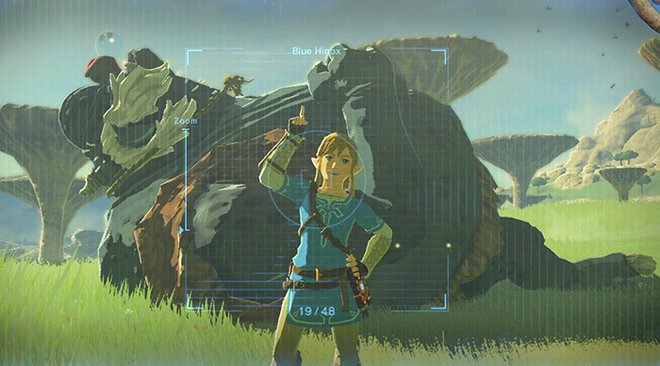 You can save your discoveries with a selfie!
You can save your discoveries with a selfie!
“Size Matters Not”
Even though the idea of absolutely massive worlds sounds great on paper, it matters more what meaningful content exists within it. Take the space exploration game No Man's Sky for example, it features the biggest playable game world of all time. It is literally the size of a real galaxy! There is absolutely no way to come close to seeing it all in any of our lifetimes, so why does it matter? Being able to say that your game is the biggest ever might sound interesting, but when your options within that space are so limited and nearly every planet looks and feels the same within No Man’s Sky’s universe, having a smaller but more engaging play area will most likely be more fun in the long run. Admitedly, No Man’s Sky is a much better game now than when it launched with new coop and building features constantly being added so that space is being put to better use than when the game first released but is still far too big for everyone to truly enjoy.
 The universe in No Man's Sky is beautiful Courtesy of Hello Games
The universe in No Man's Sky is beautiful Courtesy of Hello Games
Variety is King
Even though Breath of the Wild and RPG’s like The Elder Scrolls have made it their mission to excite and engage gameplay through exploration and creativity, it is not to say that the more straightforward open worlds shouldn’t stay either. Games like Horizon Zero Dawn and Marvel's Spider-Man for PS4 have proven that when you have fun and unique gameplay, it is okay for true freedom to take a backseat in favor of delivering us experiences that you couldn’t really accomplish as well with full control by the player. The more types of games that exist, the better. But, in the open world space for me, the best will always be the ones that tell you YES more often than not.
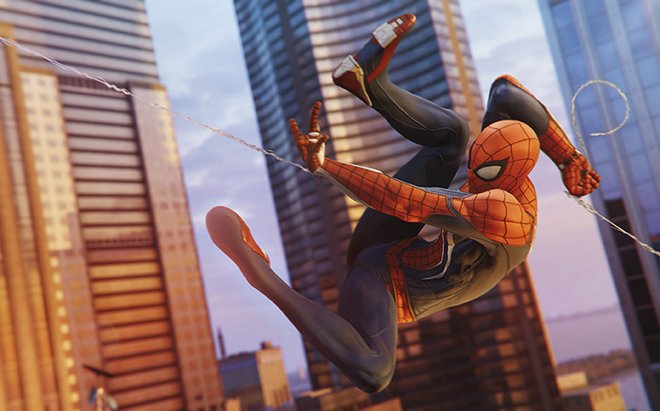 Marvel's Spider-Man sets itself apart thanks to the amazing swinging and acrobatic gameplayCourtesy of Sony
Marvel's Spider-Man sets itself apart thanks to the amazing swinging and acrobatic gameplayCourtesy of Sony
Share Your Thoughts Below
What about you? What are your favorite open world games? Let us know below!




























